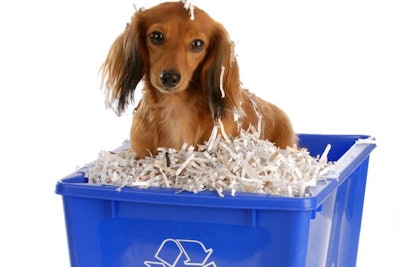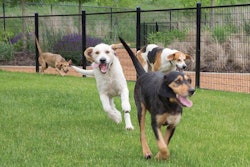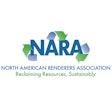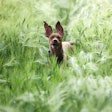
A European Union project, Food 4 Feed, tested dried food waste from hotels as a dog food ingredient. Researchers with Food for Feed established a recommended inclusion level for that dried human food waste in dog food, but also identified limits.
“In this project, catering waste from hotel kitchens was collected,” Dr. Nadine Paßlack, professor of small animal internal medicine at Justus-Liebig University in Giessen, Germany, told Petfood Industry in an email. “So, the food residues fed to the dogs in our study were human food left-overs. The food residues were solar-dried, ground, and used as a component for a complete diet for dogs.”
In Heraklion on the Greek island Crete, Food 4 Feed participants built a pilot plant for drying food waste using the sun. Hotels in the tourist areas of Heraklion and Herssonissos provided the food waste. First, the waste is hand-sorted, then shredded. It’s then dried in a greenhouse over 10 days. LIFE+ Programme of the European Union supported the project.
Dried human food waste digestibility by dogs
Paßlack tested the potential for the resulting dried food waste as a dog food ingredient. In her experiment, dogs ate one of three diets containing 5%, 10% and 15% dried food from hotels, compared the same formulation without dried food waste. After three weeks, the scientists tested the dogs’ blood and feces. Digestibility reduced with higher levels of inclusion. The researchers concluded that dog foods could contain up to 5% dried food waste. Digestibility may limit including more than that. The journal Archives of Animal Nutrition published the study results.
“Currently, using catering waste for commercial pet food is not permitted (Commission Regulation (EU) No 142/2011),” Paßlack said. “However, the results of the project might contribute to policy changes in the future.”
Environmental benefits of using human food waste in pet food
Using dried human food waste in pet foods can be called upcycling. Upcycling refers to using existing materials, especially those that would have been discarded, to make a value-added product. In the cases of the food system, otherwise unsaleable consumables become ingredients in new foods, human or pet.
Unused human food items seem a natural fit for pet food. Dogs and cats have eaten what we didn’t since before Stonehenge’s grand opening. Kids are still prone to reducing food waste by feeding unwanted portions to the dog. Like a kid at the dinner table, the human food system often rejects foods it thinks look funny. Misfit fruits and veggies may not fit through processing machines or people won't buy them fresh, for example. However, using crooked carrots and twisted ‘taters to make pet food doesn’t just fulfill the dinner-time adage of waste-not-want-not. Reducing food loss by turning it into pet food ingredients fights the global threat of a destabilized climate.
Food waste, climate change and pet food solutions
Agriculture affect the atmosphere in various ways. From producing fertilizer to flatulent cows to trucking veggies to market, the food system releases carbon dioxide, methane and other heat-trapping gases. While upcycling agricultural products doesn’t solve this problem, it does mean that pollution wasn’t produced in vain. Along with greenhouse gases, upcycling reduces waste of wildlife habitat lost to farmland and water diverted to irrigation.
Food waste equates to tremendous amounts of pointless pollution and wasted resources. The World Resources Institute report “Creating a Sustainable Food Future” presented data that food waste corresponds to 8% of annual greenhouse gas emissions worldwide, or the equivalent of 4.4 gigatons of carbon dioxide. If it were a country, food waste would be the third largest contributor of greenhouse gases on the planet. To grow all that unused food, farmers use a land area larger than China and consume a quarter of irrigation waters. Overall, approximately 24% of food is lost or wasted between production and consumption.
Pet food and treats can use that otherwise wasted food, or at least some of it. Food rescued from waste could replace at least part of a pet food companies need for ingredients. That could reduce the demand from pet food companies for some raw materials or reduce competition between human and pet food streams.
World Resources Institute analysts estimated that cereals, including grains, make up 53% of food loss and waste by caloric content. Fruits and vegetables comprised 44% by weight of lost or wasted food. In total, 1.5 quadrillion kilocalories were lost or wasted in 2009, from 1.3 billion tons of food.














